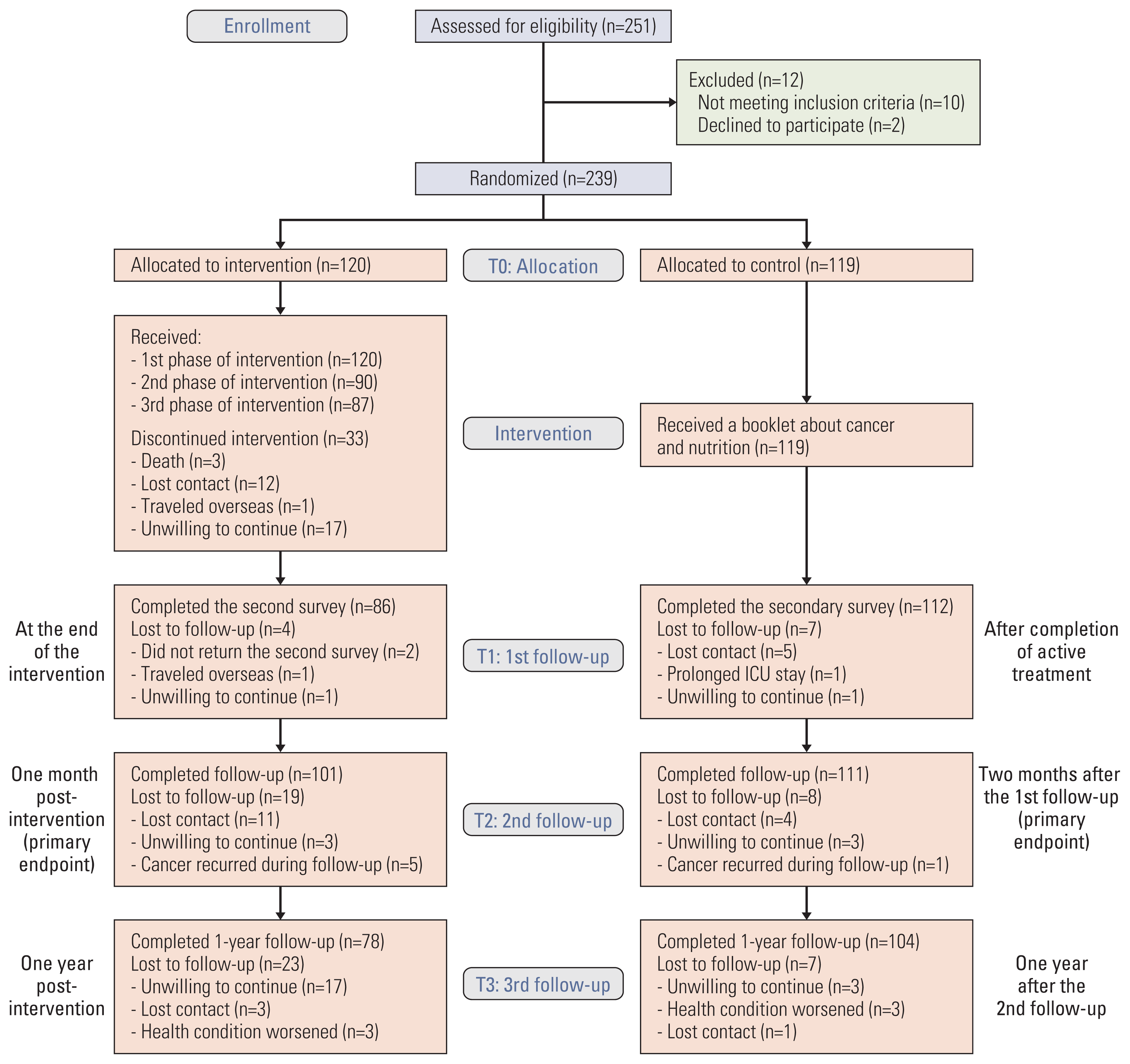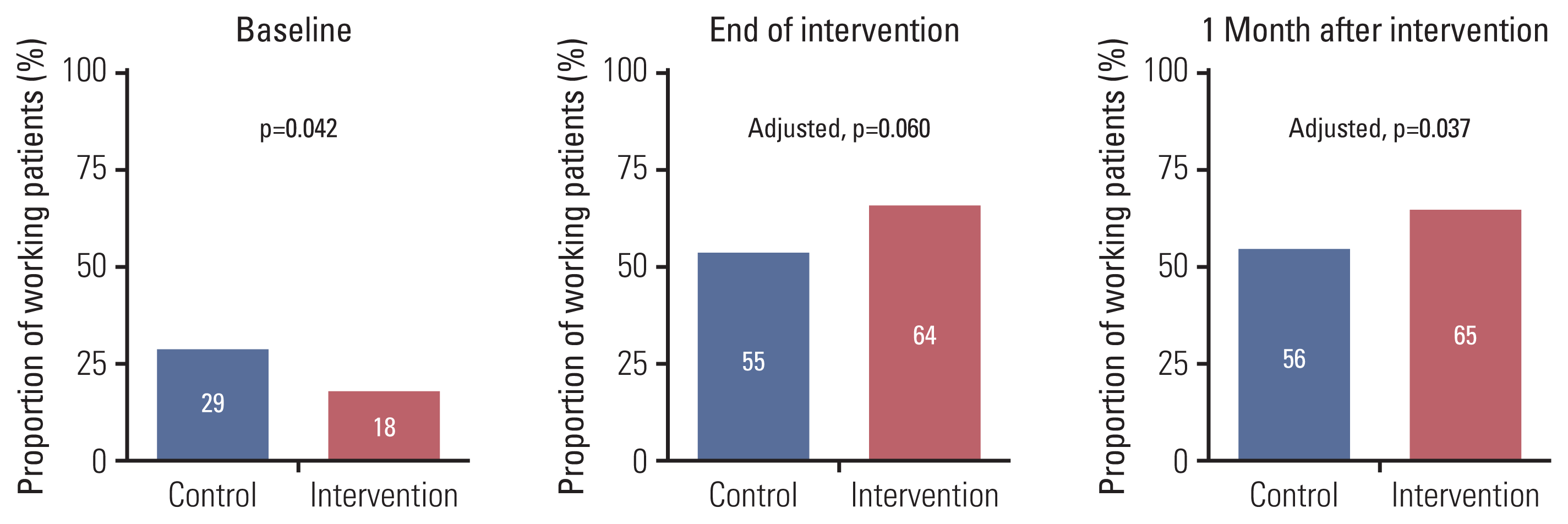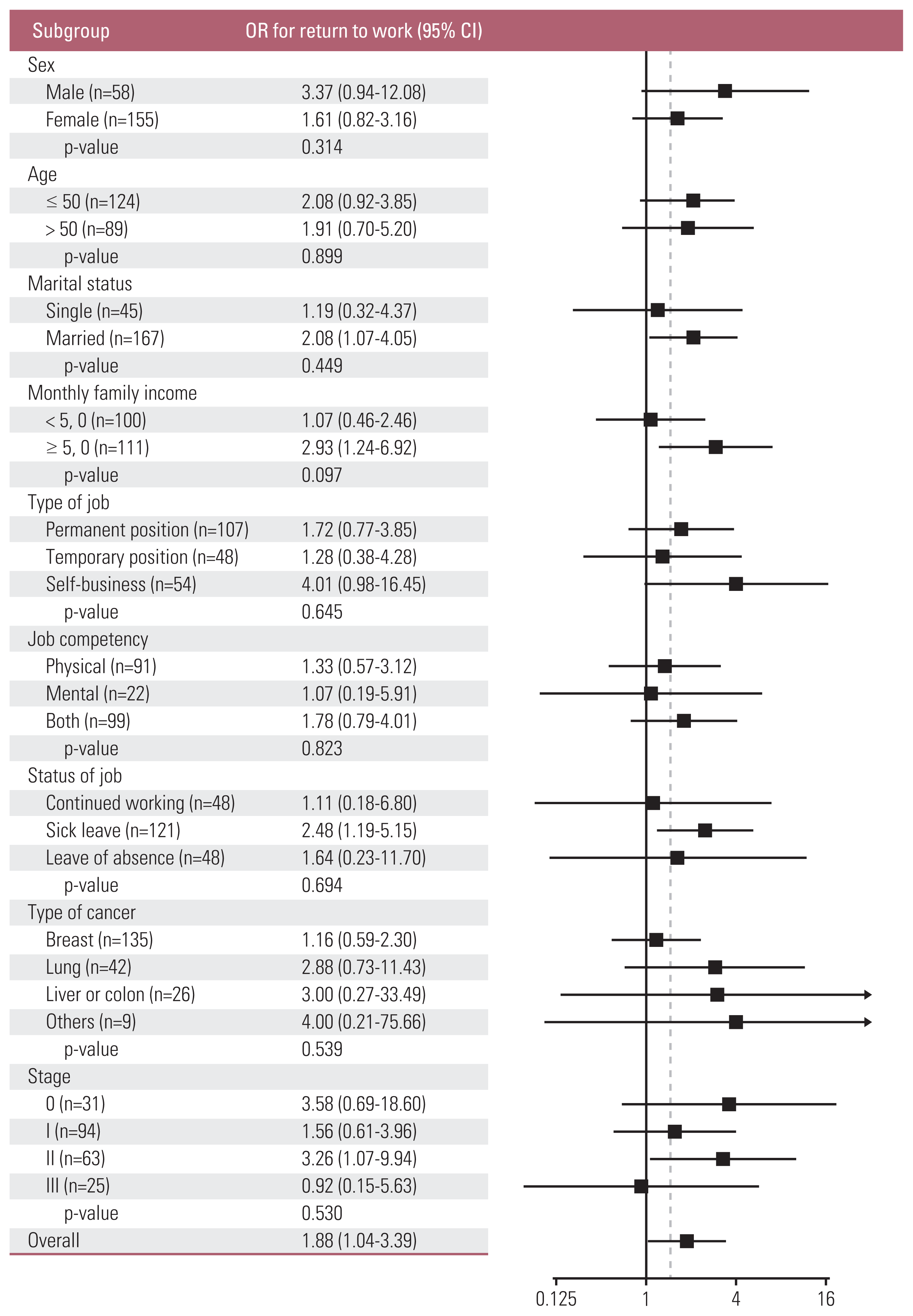1. Maddams J, Utley M, Moller H. Projections of cancer prevalence in the United Kingdom, 2010–2040. Br J Cancer. 2012; 107:1195–202.
2. Mehnert A. Employment and work-related issues in cancer survivors. Crit Rev Oncol Hematol. 2011; 77:109–30.
3. Spelten ER, Sprangers MA, Verbeek JH. Factors reported to influence the return to work of cancer survivors: a literature review. Psychooncology. 2002; 11:124–31.
4. Tamminga SJ, Jansen LP, Frings-Dresen MH, de Boer A. Long-term employment status and quality of life after cancer: a longitudinal prospective cohort study from diagnosis up to and including 5 years post diagnosis. Work. 2020; 66:901–7.
5. Torp S, Brusletto B, Withbro TB, Nygaard B, Sharp L. Work experiences during and after treatment among self-employed people with cancer. J Occup Rehabil. 2020; 30:49–58.
6. Isaksson J, Wilms T, Laurell G, Fransson P, Ehrsson YT. Meaning of work and the process of returning after head and neck cancer. Support Care Cancer. 2016; 24:205–13.
7. Hubbard G, Gray NM, Ayansina D, Evans JM, Kyle RG. Case management vocational rehabilitation for women with breast cancer after surgery: a feasibility study incorporating a pilot randomised controlled trial. Trials. 2013; 14:175.
8. Tamminga SJ, Verbeek JH, Bos MM, Fons G, Kitzen JJ, Plaisier PW, et al. Effectiveness of a hospital-based work support intervention for female cancer patients: a multi-centre randomised controlled trial. PLoS One. 2013; 8:e63271.
9. Takahashi M, Tsuchiya M, Horio Y, Funazaki H, Aogi K, Miyauchi K, et al. Job resignation after cancer diagnosis among working survivors in Japan: timing, reasons and change of information needs over time. Jpn J Clin Oncol. 2018; 48:43–51.
10. Tamminga SJ, Verbeek J, Bos M, Fons G, Kitzen J, Plaisier PW, et al. Two-year follow-up of a multi-centre randomized controlled trial to study effectiveness of a hospital-based work support intervention for cancer patients. J Occup Rehabil. 2019; 29:701–10.
11. Zaman A, Tytgat K, Klinkenbijl JH, Boer FC, Brink MA, Brinkhuis JC, et al. Effectiveness of a tailored work-related support intervention for patients diagnosed with gastrointestinal cancer: a multicenter randomized controlled trial. J Occup Rehabil. 2021; 31:323–38.
12. Shim S, Kang D, Bae KR, Lee WY, Nam SJ, Sohn TS, et al. Association between cancer stigma and job loss among cancer survivors. Psychooncology. 2021; 30:1347–55.
13. Leensen MC, Groeneveld IF, van der Heide I, Rejda T, van Veldhoven PL, Berkel SV, et al. Return to work of cancer patients after a multidisciplinary intervention including occupational counselling and physical exercise in cancer patients: a prospective study in the Netherlands. BMJ Open. 2017; 7:e014746.
14. Bae KR, Cho J. Changes after cancer diagnosis and return to work: experience of Korean cancer patients. BMC Cancer. 2021; 21:86.
15. Kwon SY, Bae KR. A study on the knowledge structure of cancer survivors based on social network analysis. J Korean Acad Nurs. 2016; 46:50–8.
16. Bae KR, Kwon S, Cho J. What cancer survivors are discussing on the internet about returning to work: a social network analysis. Asian Oncol Nurs. 2019; 19:37.
17. Cancer survivorship and work. Psycho-Oncology. 2017; 26:3–167.
18. Bae KR, Kang D, Yi JY, Ahn Y, Kim IR, Kweon SS, et al. A return-to-work intervention protocol directed at cancer patients (self-assessment, tailored information & lifestyle management for returning to work among cancer patients, START): a multi-center, randomized controlled trial. Contemp Clin Trials Commun. 2020; 19:100633.
19. Park JH, Park EC, Park JH, Kim SG, Lee SY. Job loss and re-employment of cancer patients in Korean employees: a nationwide retrospective cohort study. J Clin Oncol. 2008; 26:1302–9.
20. Vargas-Prada S, Demou E, Lalloo D, Avila-Palencia I, Sanati KA, Sampere M, et al. Effectiveness of very early workplace interventions to reduce sickness absence: a systematic review of the literature and meta-analysis. Scand J Work Environ Health. 2016; 42:261–72.
21. Hoefsmit N, Houkes I, Nijhuis FJ. Intervention characteristics that facilitate return to work after sickness absence: a systematic literature review. J Occup Rehabil. 2012; 22:462–77.
22. Blinder VS, Gany FM. Impact of cancer on employment. J Clin Oncol. 2020; 38:302–9.
23. Smith SL, Singh-Carlson S, Downie L, Payeur N, Wai ES. Survivors of breast cancer: patient perspectives on survivorship care planning. J Cancer Surviv. 2011; 5:337–44.
24. Vermeulen SJ, Anema JR, Schellart AJ, van Mechelen W, van der Beek AJ. Cost-effectiveness of a participatory return-to-work intervention for temporary agency workers and unemployed workers sick-listed due to musculoskeletal disorders: design of a randomised controlled trial. BMC Musculoskelet Disord. 2010; 11:60.




 PDF
PDF Citation
Citation Print
Print






 XML Download
XML Download